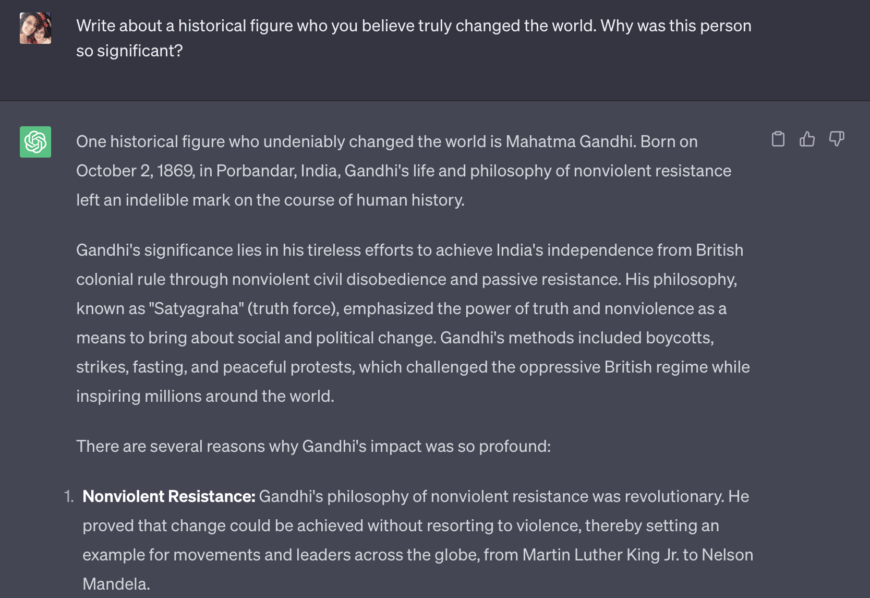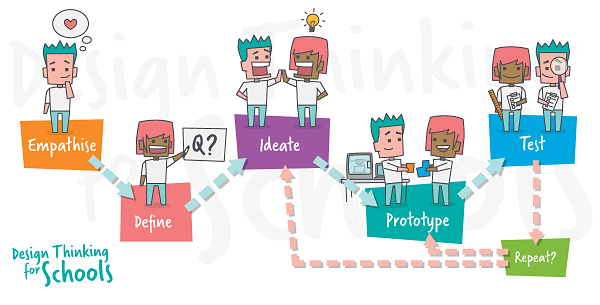As can be seen in this example, ChatGPT generates a variety of innovative ideas for the fitness app’s features. The AI also provides guidance on how to ensure user-friendliness and usability while incorporating these ideas. The students can use these suggestions as a springboard for further discussions and concept development during the Ideate stage.
In this example, ChatGPT provides a structured approach to creating a prototype for the fitness app. The AI outlines the key steps, considerations, and decisions needed to build an interactive representation of the app’s features and functionality.
Here, ChatGPT plays the role of a simulated user, providing feedback on how the user might interact with the fitness app prototype. The AI offers insights into user expectations, potential challenges, and preferences during different stages of app usage. This helps the students understand how users might perceive and interact with their design, ultimately improving the app’s usability and effectiveness.
Moving onto the Iterate stage where the goal is to refine and improve the design based on the feedback received during testing, ChatGPT can provide suggestions for making adjustments and offer insights on how to address any issues that were identified. The chat about the fitness app might continue like this:
In this example, ChatGPT assists the students in generating ideas for iterating on the fitness app design based on user feedback. The AI provides actionable suggestions for addressing user concerns and enhancing the app’s features, usability, and overall user experience.
When it comes to turning the prototype into a functional design, ChatGPT can help with the planning of the Implementation stage. It can make technical decisions, and provide insights into potential challenges. Take a look at an example conversation:
Here, ChatGPT provides a structured approach to the implementation process for the app. The AI outlines the key steps, considerations, and decisions needed to turn the refined design into a functional and user-friendly solution.
Finally, ChatGPT can assist in the Share and Communicate stage. The goal here is to effectively convey the design solution and its benefits to stakeholders and users. The AI can help generate persuasive narratives, create presentation materials, and formulate key messages like this:
ChatGPT helps the students, in this example, to craft effective communication strategies and materials to share their fitness app with stakeholders and potential users. The AI provides tips for messaging, storytelling, and visual consistency to ensure that the communication resonates with the target audience.
As has been shown here, ChatGPT and similar AI chatbots can be powerful classroom tools, not through the automation of rote learning activities but through the provision of an interactive and collaborative tool that acts as a sounding board and guide during the design thinking process. Banning access to new and evolving technologies, because they are poorly understood by educators who may feel threatened by them, is not a smart nor progressive way to evolve the curriculum or assessment. New technologies always find a way into the classroom when students find them compelling. It’s now the educators’ job to embrace this technological evolution and integrate it into their teaching practices just as their predecessors have over the past several hundred years.
For even the humble book at the invention of the printing press had its skeptics and was declared by 15th Century German Scholar, Johannes Trithemius as a negative influence on learning and knowledge transmission. He wrote:
“Printed books will never be the equivalent of handwritten codices, for half the book is the author’s while the other half consists of the reader’s comments. Without the latter, the book is dead; God himself must open its pages before it comes to life.”
All new technology has the potential to enhance the learning and teaching process. However, it is how it is used and integrated into existing processes that are important. Without proper guidance, students will take the easiest path, which is to see ChatGPT as a godsend for writing up a quick essay. Though, as has been explored herein, it can be so much more.
In the words of ChatGPT, “It’s important to note that while ChatGPT can be a valuable resource, it’s most effective when used in combination with human expertise and collaboration. Design thinking emphasises the value of multidisciplinary teams, and ChatGPT can serve as an AI collaborator that enhances the creative and problem-solving processes.”





